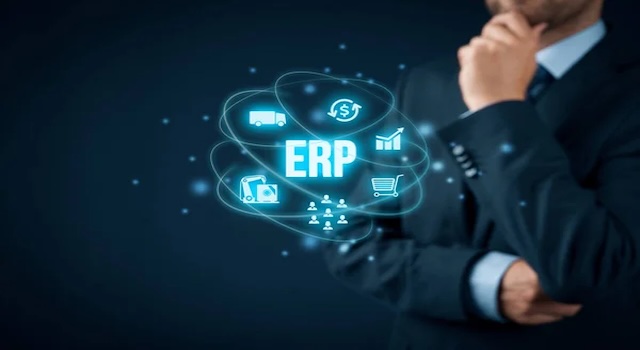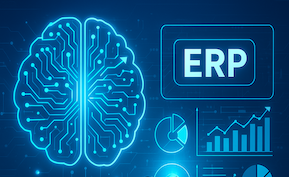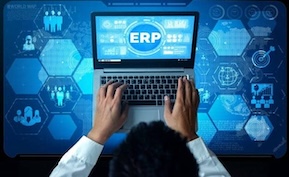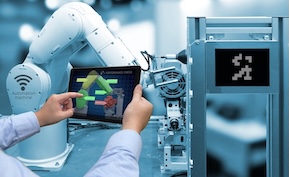Circular Manufacturing Software: Enabling Product-as-a-Service and Reverse Logistics
As manufacturers face growing pressure to reduce waste and operate sustainably, traditional linear production models—where goods are made, sold, used, and discarded—are giving way to circular models that emphasize reuse, refurbishment, and recycling. Circular manufacturing requires new software capabilities to manage complex product lifecycles, reverse logistics, and performance-based business models. Modern ERP and supply chain platforms are evolving to support this transition, enabling manufacturers to deliver both profitability and sustainability.
From linear production to circular value chains
In the linear economy, products are designed for single use and eventual disposal. The circular economy, by contrast, extends product value through repair, remanufacturing, and recycling. This shift changes how manufacturers plan, track, and measure success. Instead of focusing solely on unit sales, organizations must manage long-term asset performance and recovery rates. Software platforms play a critical role in orchestrating these closed-loop value chains.
The rise of Product-as-a-Service (PaaS)
Product-as-a-Service models replace one-time sales with recurring revenue streams based on usage or performance. For example, equipment manufacturers may offer machinery through subscription or pay-per-use contracts. Manufacturing software must support these new business models by tracking asset usage, service levels, and maintenance schedules. Integrated billing and analytics modules allow manufacturers to align pricing with actual value delivered while maintaining visibility into asset performance across customer sites.
Managing reverse logistics through automation
Reverse logistics—the process of collecting, inspecting, and reintroducing products or components into the production cycle—is central to circular manufacturing. Manual tracking of returns and refurbishments is inefficient and error-prone. Advanced ERP systems automate these workflows, linking product serial numbers, warranty records, and service histories. This automation ensures that returned items are routed correctly for reuse, repair, or recycling, minimizing waste and maximizing resource recovery.
Integrating sustainability metrics into operations
Manufacturing software now includes modules for environmental performance tracking. These tools calculate carbon footprints, energy consumption, and material efficiency at each stage of production. By integrating sustainability data into planning and reporting processes, manufacturers can identify opportunities for resource optimization and compliance with regulations such as ISO 14001 and extended producer responsibility laws. Transparency in sustainability performance also enhances brand reputation and customer trust.
Data-driven lifecycle visibility
Digital twins and IoT sensors provide continuous feedback on product performance in the field. This real-time data allows manufacturers to predict when maintenance or refurbishment is needed, extending product lifespan and improving customer satisfaction. Integration with ERP and service management systems ensures that information flows seamlessly between design, production, service, and recovery—creating a closed information loop that mirrors the physical product lifecycle.
Supporting design for reuse and recyclability
Circular manufacturing begins at the design stage. Software platforms now enable engineers to incorporate recyclability and modularity into product design. Bill-of-materials and product lifecycle management (PLM) tools include attributes for disassembly, material recovery, and component compatibility. These capabilities ensure that products can be easily refurbished or remanufactured, reducing dependency on virgin materials and lowering production costs over time.
Aligning circular goals with profitability
While sustainability drives circular manufacturing, profitability remains essential. Advanced analytics in manufacturing software help balance both priorities. By tracking material efficiency, service costs, and resale value, organizations can calculate the total lifecycle profit of each product. Predictive models optimize recovery rates and resource allocation, ensuring that sustainability initiatives also deliver measurable financial returns.
Regulatory compliance and traceability
Global sustainability regulations are expanding rapidly, requiring detailed traceability of materials and waste streams. Circular manufacturing software automates compliance reporting by maintaining auditable records of product composition, recovery, and recycling. Blockchain integration further enhances traceability, providing immutable proof of sustainable sourcing and responsible end-of-life management. These tools help manufacturers demonstrate compliance and leadership in environmental stewardship.
The future of circular manufacturing software
As circular economy principles become mainstream, manufacturing software will continue to evolve. Expect to see deeper integration between ERP, PLM, and IoT systems; enhanced analytics for lifecycle cost modeling; and automated recovery networks connecting multiple partners across the value chain. The convergence of digital innovation and sustainability will enable manufacturers to design products that last longer, waste less, and contribute to a regenerative industrial ecosystem.
The takeaway
Circular manufacturing software is redefining how products are designed, produced, and reused. By integrating sustainability into core business systems, manufacturers can transition from linear production models to circular value chains that prioritize efficiency, responsibility, and resilience. In doing so, they not only reduce environmental impact but also unlock new revenue opportunities through service-based and resource-efficient manufacturing models.







